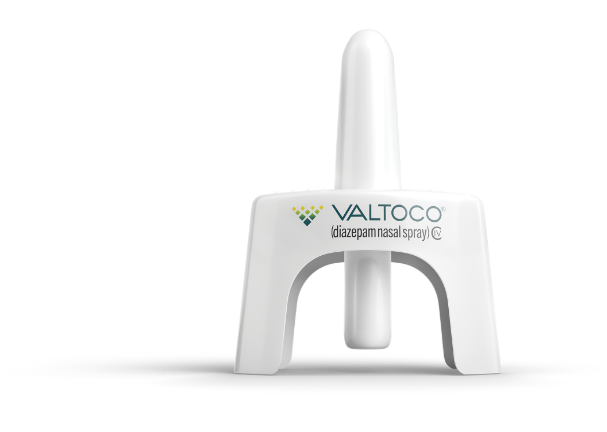VALTOCO features 5-dose packaging to better support patient care. For more information, click here.

Just when you think your patients are well controlled, seizure episodes can come out of nowhere.
Prepare them to stop seizures in their tracks.
VALTOCO is indicated for the acute treatment of intermittent, stereotypic episodes of frequent seizure activity (ie, seizure clusters, acute repetitive seizures) that are distinct from a patient’s usual seizure pattern in patients with epilepsy 2 years of age and older.1

Just when you think your patients are well controlled, seizure episodes can come out of nowhere.
Prepare them to stop seizures in their tracks.
VALTOCO is indicated for the acute treatment of intermittent, stereotypic episodes of frequent seizure activity (ie, seizure clusters, acute repetitive seizures) that are distinct from a patient’s usual seizure pattern in patients with epilepsy 2 years of age and older.1


Prepare your patients with rapid, reliable, ready seizure treatment
A 12-month, open-label, repeat-dose safety study of patients 6+ years of age found*:
4-minute median time from VALTOCO administration to seizure cessation3,*,†
- 2-minute median time to seizure cessation when VALTOCO was administered within the first 5 minutes4
87% of seizure episodes used a single dose of VALTOCO over a 24-hour period5,*
- 89% of seizure episodes in patients aged 6 to 17 years6
A majority of patients returned to their usual selves within 1 hour of administration of VALTOCO7,‡
- Treatment-related somnolence was reported in 1.8% of patients5
The number of seizure-free days between treated seizure clusters doubled over a 12-month period in patients using VALTOCO8
4-minute median time from VALTOCO administration to seizure cessation3,*,†
- 2-minute median time to seizure cessation when VALTOCO was administered within the first 5 minutes4
87% of seizure episodes used a single dose of VALTOCO over a 24-hour period5,*
- 89% of seizure episodes in patients aged 6 to 17 years6
A majority of patients returned to their usual selves within 1 hour of administration of VALTOCO7,‡
- Treatment-related somnolence was reported in 1.8% of patients5
The number of seizure-free days between treated seizure clusters doubled over a 12-month period in patients using VALTOCO8
*This was an exploratory analysis of a 12-month, open-label, repeat-dose safety study in patients 6+ years of age; the study did not have prespecified efficacy endpoints.5
†Median time to seizure cessation of 4 minutes (range, -1-1151 minutes).3
‡59% of patients returned to their usual selves within 60 minutes of administration of VALTOCO as recorded in patient and caregiver surveys.7